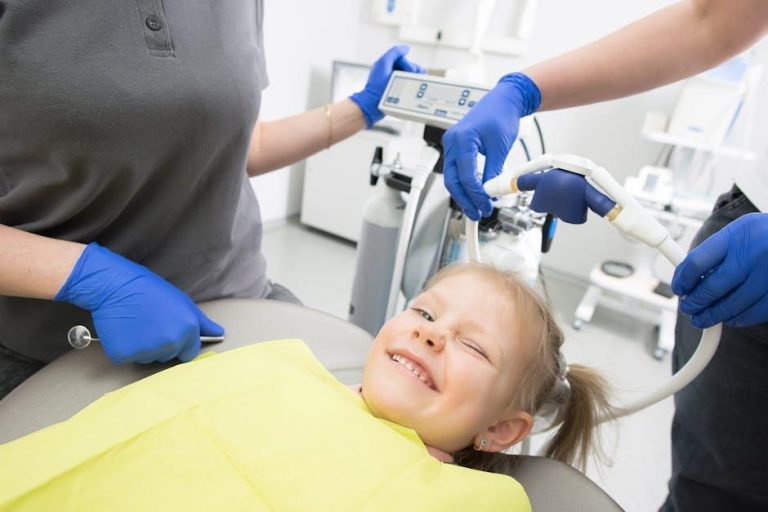1 in 3 Kids Has Dental Problems, Poll Finds – U.S. News & World Report
According to a recent poll highlighted by U.S. News & World Report, approximately one in three children in the United States suffers from dental problems. This alarming statistic drives attention to the critical issue of childhood oral health and the need for increased awareness, prevention, and early intervention. In this article, we’ll dive deep into what these findings mean, explore common dental problems affecting kids, discuss causes, and offer practical tips for parents and caregivers to protect their children’s smiles.
Understanding the Poll and Its Significance
The poll surveyed thousands of parents nationwide, revealing that dental issues such as tooth decay, cavities, and gum disease are prevalent in nearly 33% of children. This figure is significant for several reasons:
- Healthcare costs related to pediatric dental care continue to rise.
- Dental problems can affect a child’s nutrition, speech, and self-esteem.
- Oral health is a key indicator of overall health and well-being.
Experts emphasize that early detection and proper dental hygiene can reverse many issues before they escalate into chronic problems.
Common Dental Problems in Children
Here is a table summarizing the most common dental issues reported in children according to the poll:
| Dental Problem | Symptoms | Prevalence |
|---|---|---|
| Tooth Decay (Cavities) | Visible holes, tooth pain, sensitivity to hot/cold | Most common – 25% of kids surveyed |
| Gum Disease (Gingivitis) | Red, swollen gums, bleeding during brushing | 7% of kids reported symptoms |
| Tooth Sensitivity | Discomfort when eating/drinking hot or cold foods | 5% of kids experience sensitivity |
| Malocclusion (Misaligned Teeth) | Difficulty chewing, speech issues, visible overcrowding | 10% have early signs |
Why Are Dental Problems So Common Among Kids?
Several factors contribute to the high rate of dental problems in children, including:
- Poor Oral Hygiene: Inconsistent brushing and flossing habits can lead to plaque buildup and cavities.
- Diet Choices: High sugar and acidic foods/drinks increase the risk of tooth decay.
- Lack of Regular Dental Visits: Without routine checkups, early signs of problems often go unnoticed.
- Socioeconomic Factors: Access to dental care and education about oral health varies widely.
- Genetics: Some children are predisposed to dental issues due to inherited enamel weaknesses or jaw structure.
Practical Tips for Preventing Dental Problems in Children
Parents and guardians play a vital role in promoting healthy teeth and gums. Here are some expert-backed tips to help guard against early dental problems:
- Start Early: Clean your child’s gums gently before teeth emerge and introduce brushing twice a day as soon as teeth appear.
- Use Fluoride Toothpaste: Fluoride strengthens enamel and fights cavities. For children under 3 years, use a smear of toothpaste; for 3-6 years, a pea-sized amount.
- Limit Sugary Snacks and Drinks: Encourage eating fresh fruits and vegetables and avoid prolonged consumption of sugary beverages like soda or fruit juices.
- Schedule Regular Dental Checkups: The American Academy of Pediatric Dentistry recommends a dental visit by the child’s first birthday and every six months thereafter.
- Model Good Behavior: Brush and floss alongside your child to teach proper techniques and reinforce habits.
Did you know? Early childhood caries (severe tooth decay in young children) is largely preventable with proper dental care and diet management.
Case Study: Success Story of Improved Childhood Dental Health
Meet Sarah, a mother of two from Ohio, who noticed her son developing frequent toothaches by age 4. After a dental visit, the dentist identified multiple cavities caused by sugary snacks and infrequent brushing. Sarah immediately revamped her children’s oral care routine:
- She introduced a fun brushing chart with rewards.
- Replaced sugary drinks with water and milk.
- Ensured biannual dental checkups.
Within six months, Sarah’s son showed remarkable improvement in oral health, with no new cavities reported. This real-life example highlights how simple changes can make a huge difference.
Expert Insights on Pediatric Dental Care
Dr. Emily Martinez, a pediatric dentist based in New York, shares:
“Dental problems in children can sometimes go unnoticed because kids rarely express discomfort early on. That’s why parents must be vigilant about regular dental visits and proper hygiene from infancy. Prevention is the most effective strategy.”
She also recommends parents stay informed and proactive:
- Ask your dentist about protective treatments like dental sealants.
- Teach children the importance of dental health and empower them to take care of their smiles.
Summary: What Every Parent Should Know
To wrap up, these are the key takeaways from the recent poll and expert advice on children’s dental health:
| Key Message | Action Steps |
|---|---|
| 1 in 3 kids face dental problems | Monitor for signs and maintain regular dental visits |
| Prevention is crucial | Adopt consistent oral hygiene and healthy diets |
| Early intervention prevents long-term issues | Schedule dental checkups from first tooth |
| Parental involvement boosts success | Model healthy habits and educate your child |
Conclusion: Protecting Our Children’s Bright Smiles
The fact that one in three children in the U.S. struggles with dental problems is a wake-up call for parents, caregivers, and communities alike. Childhood dental health is vital—not only for a confident smile but for overall well-being, nutrition, and development. By understanding common dental issues, prioritizing prevention, and fostering good habits, parents can help their children enjoy healthy teeth well into adulthood. Stay proactive, seek professional dental guidance, and ensure that every child has the best chance at a pain-free, beautiful smile.
Stay tuned for more updates on pediatric dental care and health insights from U.S. News & World Report.


